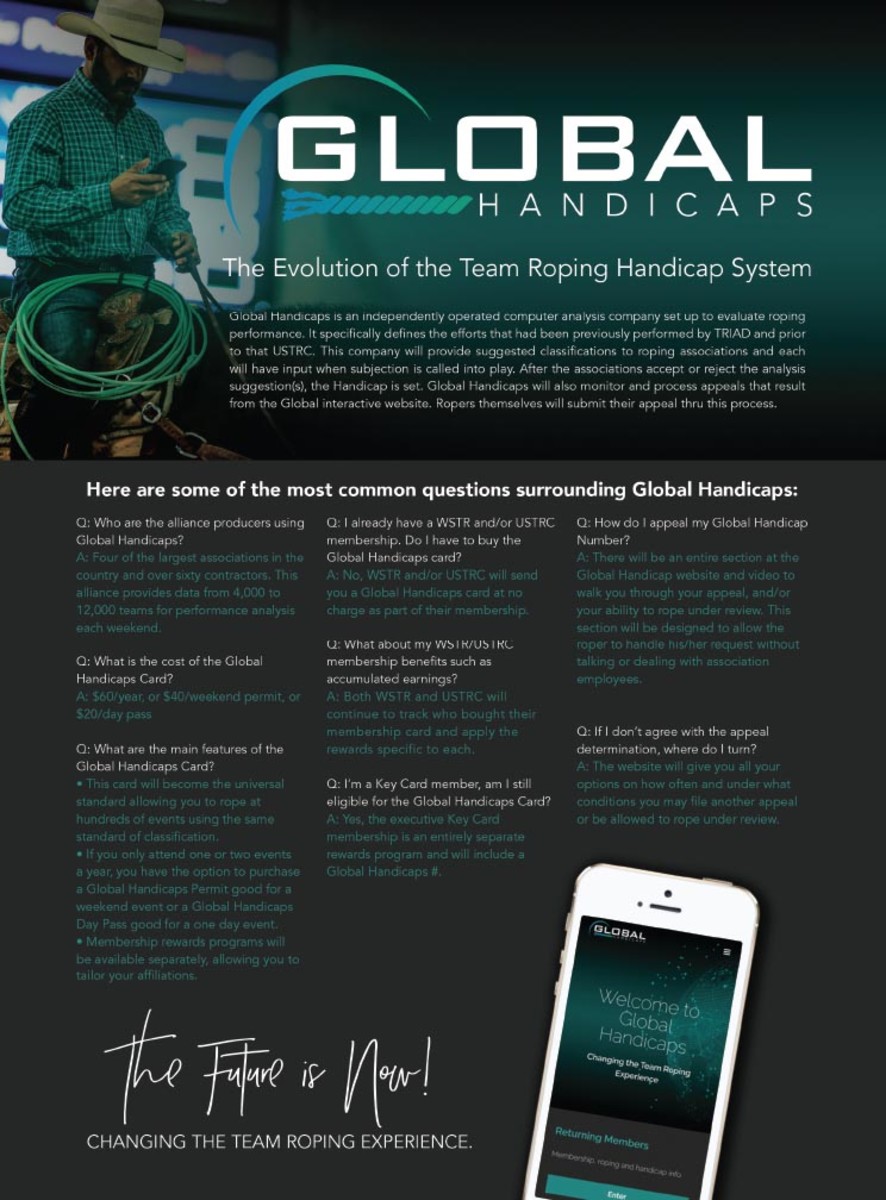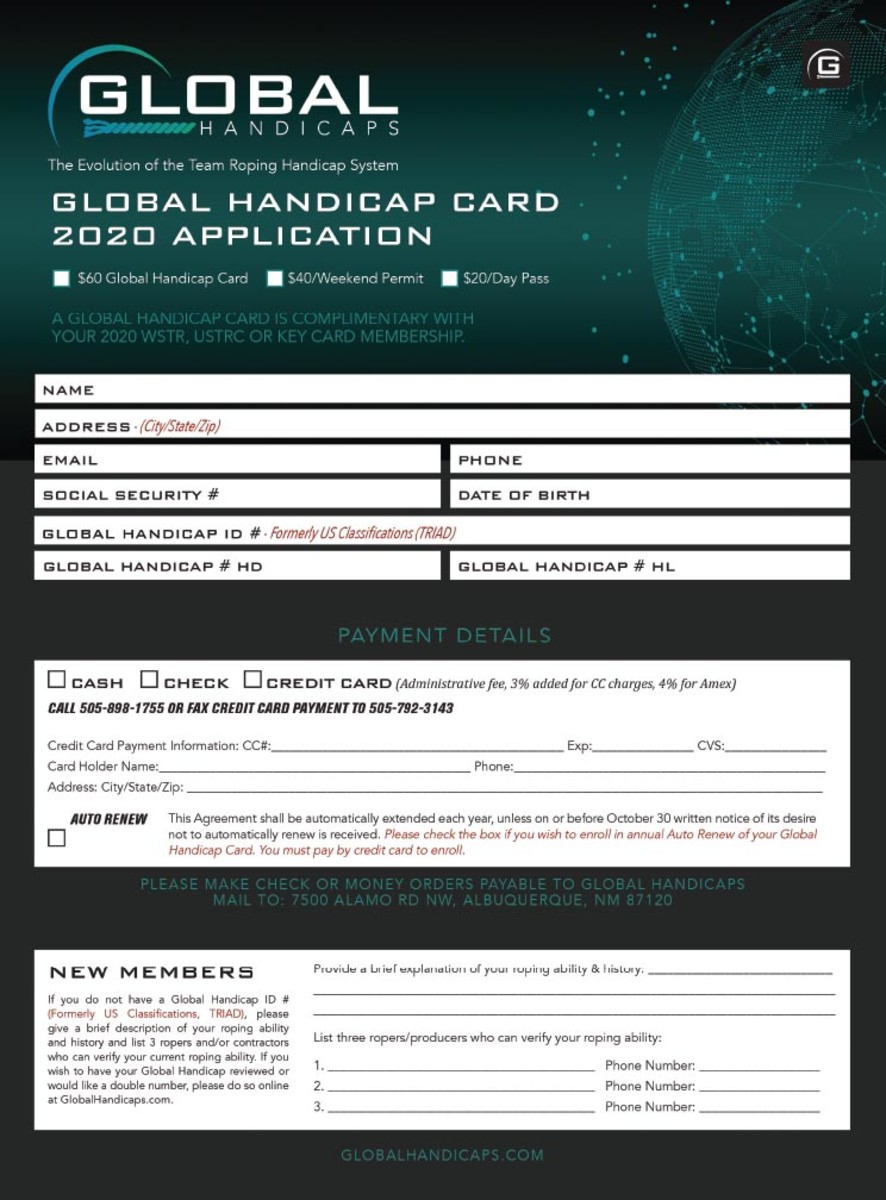The WSTR finale is a month away and it looks…kind of like the greatest team roping on this planet, so I will waste no words trying to promote it. There are so many years, miles traveled, and so much sweat by thousands for our sport to have a roping of this magnitude. So let’s talk about the next step!
This letter and one more letter in December will be my last as I turn the reins over to Ty Yost. The point here is that I have nothing personal to gain, and no reason to give you any BS or sales pitch other than to hopefully improve one last thing. Team ropers have been absolutely wonderful in supporting every change we have presented over the years. I believe that has happened because we have been honest with you, and really tried hard to balance our business interests with the interest of the team roping industry, trying to make it better. There are plenty who try to dispute that, but in retrospect obviously the proof is in the pudding.
But there is unfinished business and we have been scrambling to finish! You love great ropings and super cattle, but the one thing that has always received more discussion than anything else is classifications. While everyone recognizes classifications revolutionized team roping, it has been described as an “albatross.”
Webster says that is “something that causes persistent deep concern or anxiety.” Gary Poythress, who heads Rodeo Computer Services and formerly had the contract for TRIAD, has spent his last thirty years trying to perfect the analysis on performance. He has always embraced it and I have always run away from classifications, but ultimately defending them for the sake of all of us.
WSTR was forced to do classifications for a couple of years and eventually actually preferred doing business with and paying its biggest and most bitter competitor rather than deal with them. That’s why I don’t say much when I hear new outfits bragging how they can instantly do it better than the people who have been doing it for decades, really? Classifications are what have grown this industry, so we’ve had no choice. But when USTRC came under our wing, the goal was simple, to get USTRC and all of us out of the classification business.
Two years ago, our two camps, Gary and his RCS team and WSTR and USTRC finally agreed on a solution. We were instantly in agreement, because of the universal use of classifications in the industry, it had to be an independent entity. Next, what if every roper in the world, under certain criteria, had options to manage his or her own appeal? What if they could determine their ability to rope under review and control where they got to rope under review? What if there was a dedicated website, totally interactive, where all subjects concerning a handicap could be handled by the roper and for themselves? What if there were no more asking permission, no more begging for help, and no more frustrating phone calls.
I have been hinting for months about this strategy and have persuaded a lot of people that this is the right way to go. Gary has worked his people to death building the infrastructure that will become Global Handicaps. The goal is to create an independent international classifications system. Numbers should operate like Golf handicaps, just a fact of life. We all want transparency, but these programs and algorithms are complicated. Until now every effort to explain it or to provide transparency on analysis has resulted in conflict. The solution is ‘”involvement” on the end product, not only by associations but also by each roper themselves. We have to put you in charge of your own review and appeal requests, and if it doesn’t work, then you will know why!
For that to happen, a complete rewrite of the Roping Event Software had to be coupled with a long-term deal serving the new independent “Global Handicaps.”
Integrated into this software are all the usual bells and whistles, and pretty much
everything you need to know will be on the mobile device, and ”Time Tracker”
which allows people to follow along as
each roping progresses. The final versions
of the software will be contained within a mobile app that not only gives you access to events, but also “Global Handicaps.”
The next part of the deal was to get the associations to finance most of this. operation for a period of time. Getting people to give up money? That was a challenge, but in the end we were able to get at least three associations to give
up a large portion of their membership
money for the next five years to see
this happen. Ropers of the two big
associations, WSTR and USTRC, will be asked to pay a little more, but the associations are paying the lion’s share. Your membership dues will go up to $130 for both WSTR and USTRC next season to
make this happen.
The finger pointers will say the greedy owners are raising the price. NO SIR, I take full responsibility for this decision and I need your help to make this work. I convinced them it is in their best longterm interest to do this at this point. My sales pitch to ropers is this, instead of paying extra for a double number, isn’t it worth a twenty-dollar bill for the ability to deal with your own appeal via an interactive website? The phone calls are frustrating to everyone; we have to do something to break this cycle of discussions on handicaps.
There are thousands of ropers who do not rope at a WSTR or USTRC ropings but buy memberships for classifications and the magazine. Many arenas need a classification card to prove his/her number. Thus a Global Handicap card will serve this purpose. Ropers who do not need a WSTR or USTRC membership will be able to purchase a Global Handicap Card for $60. That’s a reduction to those folks, not to mention the day permits and weekend permits that have been put into play. All of this is to get and keep ropers in the game.
If you become a WSTR or USTRC member and you do not already have a Global Handicap card, you will automatically receive one with your membership. There will be no handicap on the association membership cards because they simply are NOT in the handicap business. A membership card is a license to rope, and other associations with memberships will more than likely be requiring the Global Handicap card. The Key Card is the only membership card with a Handicap # and it will serve as your Global Handicap Card, WSTR and USTRC membership card all in one. I think you can now see why the Key Card was introduced for the serious roper who will only need one card and will save themselves hundreds in entry fee discounts.
There are a lot of simple things that we did the last 24 months that were not complicated. Those things will continue. Thousands of handicaps dropped in the last two years based on catch percentages. In addition, par times have integrated into the analysis. We have had the ability for the past twenty years to know what the par times should be for each division. It isn’t a secret to any of us why the ropings from the 10.5 to 7 ropings are flourishing. Quite simply the computer program is dealing with ropers who drastically beat the par times of those divisions, and dropping ropers who have never hit them. All of this may sound a little complicated at first, but I encourage all of you to have patience and don’t panic. There will be videos to help you though.
Handicaps are a biggie and we are all in agreement that if we can nail this, it is the second greatest thing we can do for you. But please understand this is not just about handicaps. This is about changing the entire roper experience. We know that everything “team roper” you need to know needs to be available on your mobile device, and all that is coming online now. But there were lots of building blocks that needed completion first. We will have presentations at the NFTR and at Las Vegas throughout the event to help you see and operate these “Classification” features.













